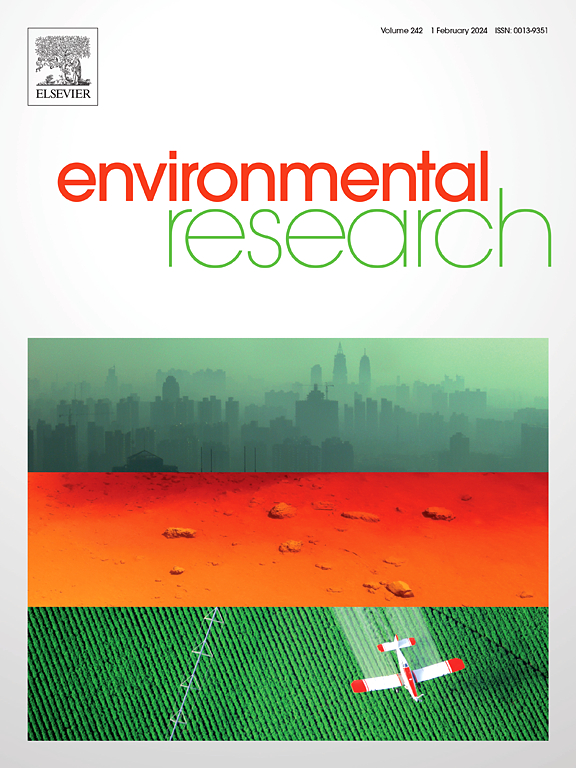钙钛矿复合催化剂液相等离子体裂解废有机溶剂同时制取高纯氢和碳。
IF 7.7
2区 环境科学与生态学
Q1 ENVIRONMENTAL SCIENCES
引用次数: 0
摘要
本研究提出了一种通过简单的蒸馏过程净化废弃挥发性有机化合物溶剂,然后通过液体等离子体裂解生成氢和碳的方法。此外,还引入了一种具有优异可见光敏感性的新型PrBiFeO3钙钛矿复合材料,以提高该反应的效率。废有机溶剂经蒸馏转化为精制有机溶剂。在这个过程中,会产生氢气和碳颗粒。为了提高等离子体分解的活性,合成了钛酸盐基钙钛矿(CaTiO3、SrTiO3、NiTiO3)和铁酸盐基钙钛矿(PrFeO3、PrBiFeO3)作为催化剂。为了获得具有较好光吸收和较低带隙能的可见光催化剂,利用了新制备的PrBiFeO3钙钛矿。对这些钙钛矿光学性质的研究表明,它们对可见光具有很高的灵敏度。将这些催化剂应用于有机溶剂的液相等离子体裂解,铁酸盐基钙钛矿催化剂表现出较高的反应活性。PrBiFeO3催化剂的析氢率和产碳率最高,分别达到约150 L/(g∙h)和17.7%。在该反应体系中,催化剂对可见光的敏感性与反应活性的增加有关。氢纯度高,碳纯度也高,具有粒径小、比表面积大的特点。本文章由计算机程序翻译,如有差异,请以英文原文为准。
Simultaneous production of high-purity hydrogen and carbon from waste organic solvents by liquid-phase plasma cracking over perovskite composite catalysts
In this study, a method for purifying waste volatile organic compound solvents through a simple distillation process, followed by the generation of hydrogen and carbon via liquid-plasma cracking is proposed. In addition, a novel PrBiFeO3 perovskite composite with excellent visible light sensitivity is introduced to enhance the efficiency of this reaction. The waste organic solvents are converted into refined organic solvents through distillation. During this process, hydrogen gas and carbon particles are generated. To improve the activity of the plasma decomposition, titanate-based perovskites (CaTiO3, SrTiO3, NiTiO3) and ferrite-based perovskites (PrFeO3, PrBiFeO3) were synthesized and employed as catalysts. To achieve a catalyst with better optical absorption and a lower band gap energy for visible light, a newly prepared PrBiFeO3 perovskite was utilized. The investigation into the optical properties of these perovskites revealed a high sensitivity to visible light. When these catalysts were applied to the liquid-phase plasma cracking of organic solvents, the ferrite-based perovskite catalysts demonstrated higher reaction activity. The highest rate of hydrogen evolution and carbon yield were obtained with the PrBiFeO3 catalyst, achieving approximately 150 L/(g∙h) and 17.7 %, respectively. In this reaction system, sensitivity of the catalyst to visible light was correlated with increased reaction activity. The hydrogen exhibited high purity, while the carbon was also of high purity, characterized by small particle size and a large specific surface area.
求助全文
通过发布文献求助,成功后即可免费获取论文全文。
去求助
来源期刊

Environmental Research
环境科学-公共卫生、环境卫生与职业卫生
CiteScore
12.60
自引率
8.40%
发文量
2480
审稿时长
4.7 months
期刊介绍:
The Environmental Research journal presents a broad range of interdisciplinary research, focused on addressing worldwide environmental concerns and featuring innovative findings. Our publication strives to explore relevant anthropogenic issues across various environmental sectors, showcasing practical applications in real-life settings.
 求助内容:
求助内容: 应助结果提醒方式:
应助结果提醒方式:


